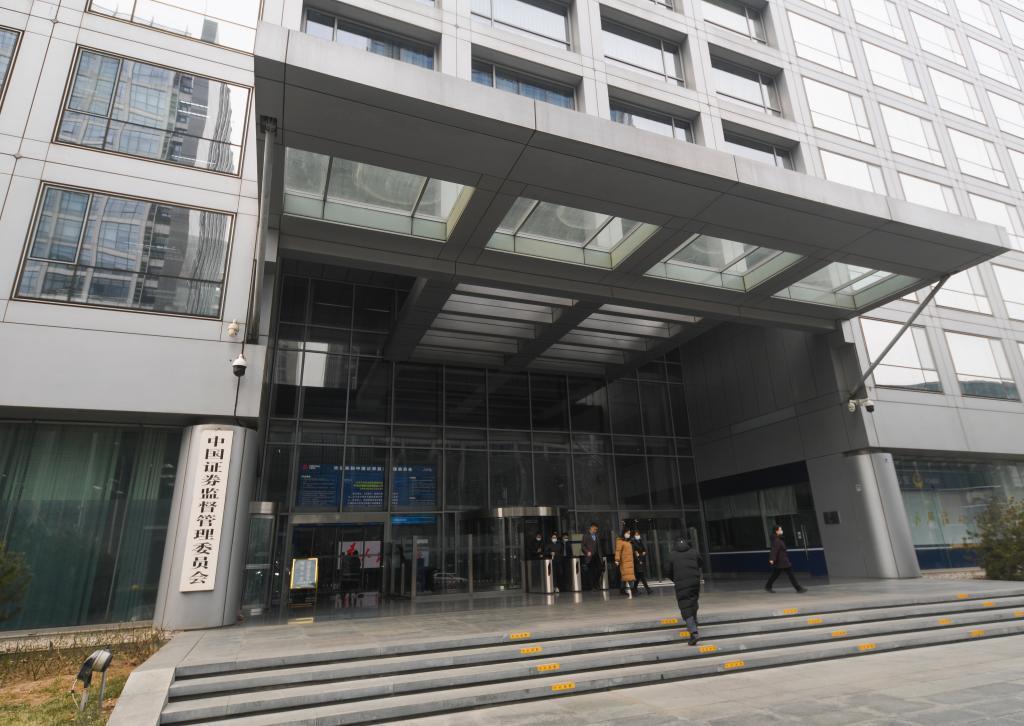Xinhua | February 18, 2023
China has officially rolled out its across-the-board registration-based initial public offering (IPO) system, with relevant rules coming into effect on Friday, according to the country's securities regulator.
Of milestone significance in the reform of China's capital market, the move has basically put in place the institutional arrangements for the registration-based system, the China Securities Regulatory Commission (CSRC) said in a statement.
The rules involve simplifying listing requirements, optimizing registration procedures, improving the regulations on underwriting and on major asset restructuring of listed firms, strengthening oversight and law enforcement, and stepping up the protection of investors.
The registration-based IPO reform -- initiated in 2018 and successively adopted by the science and technology innovation board, the ChiNext board, and the Beijing Stock Exchange -- has opened up a new vista for the development of China's capital market, according to the commission.
The essence of this reform is letting the market make the choice under tightened market and legal constraints, an official with the commission noted.

This photo taken on Feb. 17, 2023 shows a view of the Beijing Stock Exchange in Beijing, capital of China. (Xinhua/Wang Quanchao)
INFORMATION DISCLOSURE AT CORE
"Compared with the approval-based IPO system, the new system takes information disclosure as its core, making the listing process more regulated, transparent and predictable," said Chen Li, chief economist of Chuancai Securities.
"Instead of relaxing requirements on information disclosure, the system imposes stricter standards," Chen said.
The system also shifts the emphasis of market oversight to information disclosure, which will function as the ballast for the standardization of the capital market, as high-quality information disclosure can help prevent or rectify investment misjudgment caused by information gaps and unlawful trading, industry insiders noted.
Under the registration-based IPO system, stock exchanges will comprehensively evaluate whether the applicants are qualified to issue stocks and be listed, and whether they meet the requirements for information disclosure.
The CSRC will check the companies' alignment with the country's industrial policies and the features of the respective boards, help the stock exchanges navigate potential problems during evaluations and make registrations based on results of evaluations.

This photo taken on Feb. 17, 2023 shows a view of the China Securities Regulatory Commission in Beijing, capital of China. (Xinhua/Wang Quanchao)
BOOST TO DIRECT FINANCING
The overall adoption of the registration-based IPO system will lower the listing thresholds and boost direct financing, said Li Qiusuo, managing director of the research department at China International Capital Corporation Limited.
Based on the results of its pilot run, the system is likely to enhance the inclusiveness of the capital market, allowing unprofitable firms, red chips and those with special equity structures to be listed.
This mechanism has allowed sci-tech start-ups easier access to the capital market, leading to a significant increase in the proportion of technology companies on the stock markets.
Dong Dengxin, a researcher with the Wuhan University of Science and Technology, said the reform would provide more opportunities for firms with high-growth potential, advanced technologies, and research and innovation prowess, and facilitate high-level circulation of benefits among sci-tech companies, capital and the real economy.

A man takes photos of an electronic screen displaying stock prices at the listing ceremony of the first batch of registration-based initial public offerings of enterprises on the ChiNext board at Shenzhen Stock Exchange in Shenzhen, south China's Guangdong Province, Aug. 24, 2020. (Xinhua/Mao Siqian)
DELISTING
While optimizing the listing standards, the new system also optimizes the delisting rules and diversifies market exit channels to include forced delisting, mergers and acquisitions, and bankruptcy reorganization.
Statistics from the financial information provider Wind showed that only just over 220 companies had been delisted in the A-share market so far, due to high delisting thresholds under the previous approval-based system.
As a result of the pilot run, reforms in delisting rules had achieved remarkable results from 2019 to 2022, with the delisting rate seeing an obvious rise. A total of 85 companies were delisted during this period, exceeding the aggregate number recorded in the previous 20 years.
"The registration-based IPO system complements the delisting system, which creates a market screening mechanism for survival of the fittest," said Pan Helin, a researcher at Zhejiang University.
The system will make listing and delisting easier, which requires investors to be sharper in terms of value judgment and stock selection, and places institutional investors in a more advantageous position, said Li Xunlei, chief economist of Zhongtai Securities.

